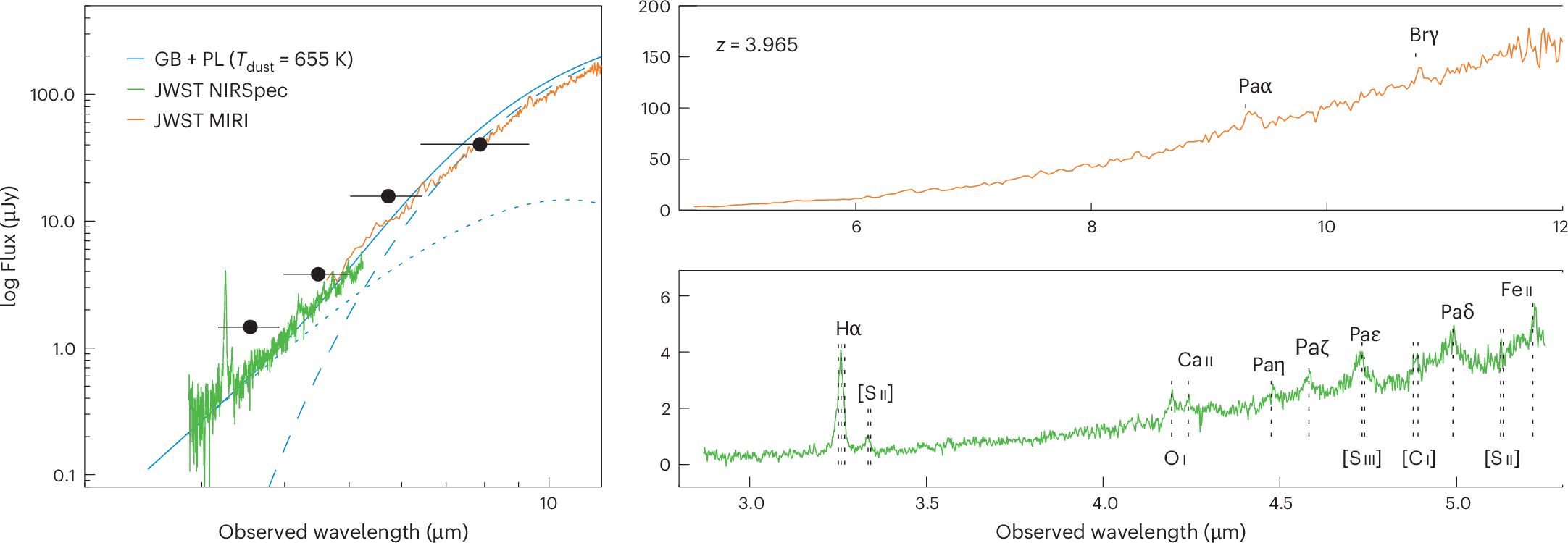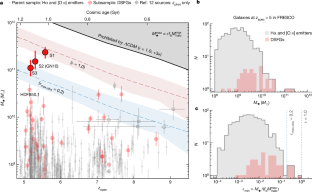2024-11-13 NASA
<関連情報>
- https://www.nasa.gov/missions/chandra/astronomers-find-early-fast-feeding-black-hole-using-nasa-telescopes/
- https://www.nature.com/articles/s41550-024-02402-9
JWSTで観測されたビッグバンから1.5Gyr後の超エディントン加速ブラックホール A super-Eddington-accreting black hole ~1.5 Gyr after the Big Bang observed with JWST
Hyewon Suh,Julia Scharwächter,Emanuele Paolo Farina,Federica Loiacono,Giorgio Lanzuisi,Günther Hasinger,Stefano Marchesi,Mar Mezcua,Roberto Decarli,Brian C. Lemaux,Marta Volonteri,Francesca Civano,Sukyoung K. Yi,San Han,Mark Rawlings & Denise Hung
Nature Astronomy Published:04 November 2024
DOI:https://doi.org/10.1038/s41550-024-02402-9

Abstract
Recent James Webb Space Telescope (JWST) observations have revealed a surprisingly abundant population of faint, dusty active galactic nuclei at z ≈ 4–7. Together with the presence of supermassive black holes at z > 6, this raises questions about the formation and growth histories of early black holes. Current theories for the formation of seed black holes from the death of the first stars (that is, light seeds) and/or the direct collapse of primordial gas clouds (that is, heavy seeds) still lack observational confirmation. Here we present LID-568, a low-mass (7.2 × 106 M⊙) black hole hosting powerful outflows that is observed in an extreme phase of rapid growth at redshift z ≈ 4. This object is similar to other JWST-discovered faint active galactic nuclei populations, but is bright in X-ray emission and accreting at more than 4,000% of the limit at which radiation pressure exceeds the force of gravitational attraction of the black hole (that is, super-Eddington accretion). Analysis of JWST Near-Infrared Spectrograph integral field unit data reveals spatially extended Hα emission with velocities of ~−600–−500 km s−1 relative to the central black hole, indicative of robust nuclear-driven outflows. LID-568 represents an elusive low-mass black hole experiencing super-Eddington accretion as invoked by models of early black hole formation. This discovery showcases a previously undiscovered key parameter space and offers crucial insights into rapid black hole growth mechanisms in the early universe.



